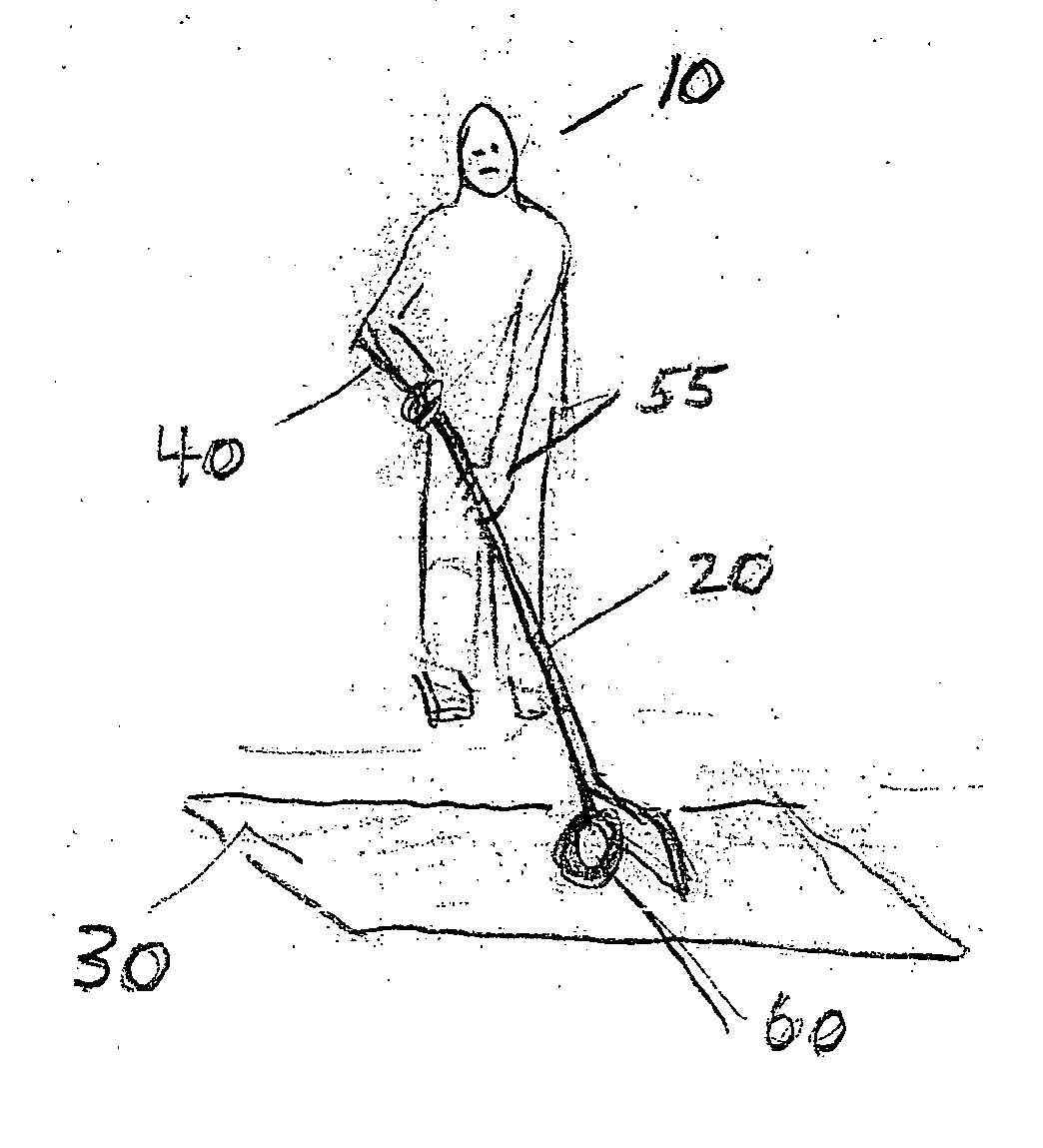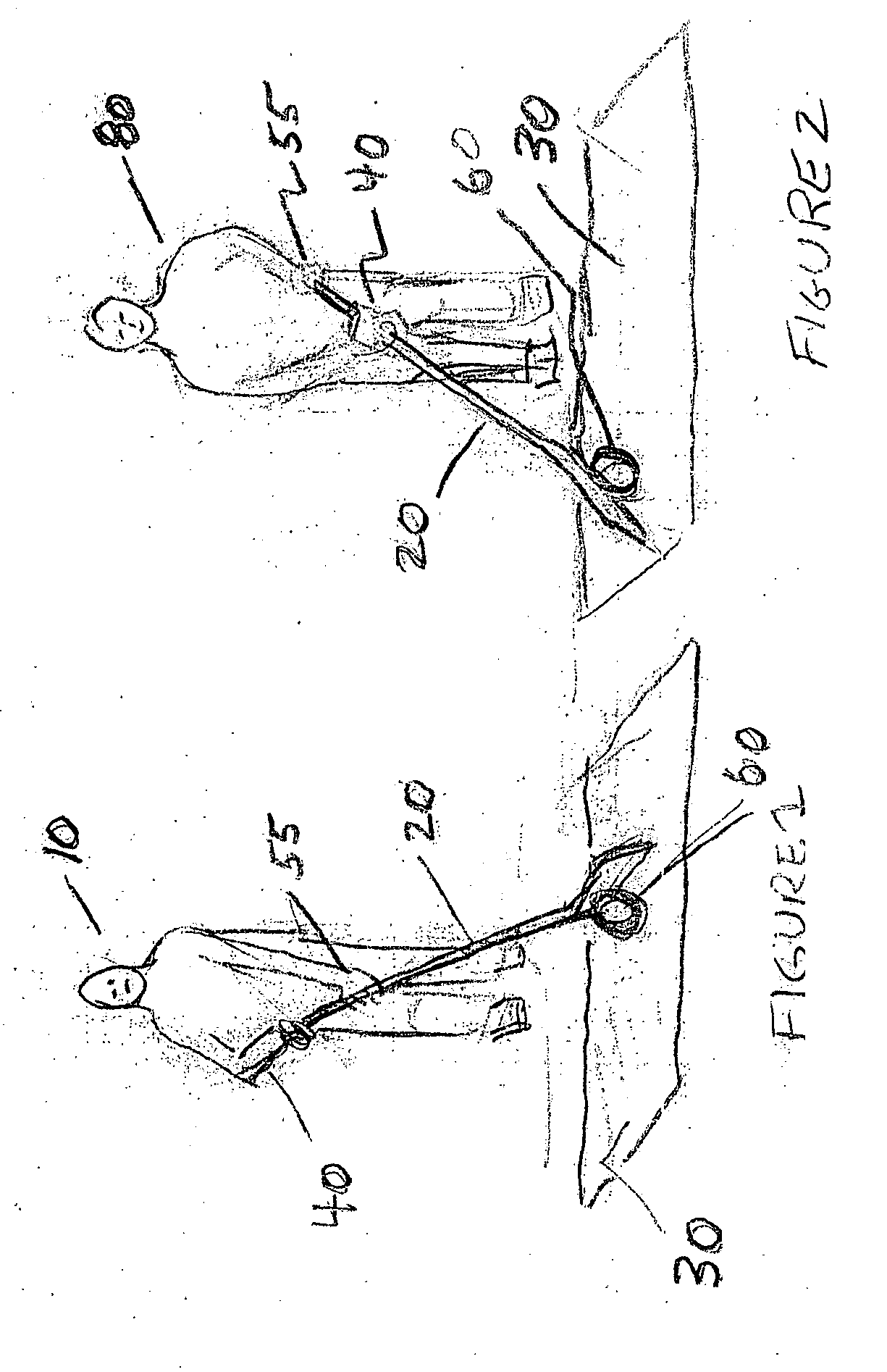Method and apparatus for hockey stick handling training
a technology of hockey stick and training method, applied in the field of methods and apparatus, can solve the problems of not being skilled or confident enough to handle sticks at a desired level, many hockey players do not perform enough stick handling motion repetitions, and not enough time to learn and practice stick handling. , to achieve the effect of improving stick handling skill, muscle strength and enduran
- Summary
- Abstract
- Description
- Claims
- Application Information
AI Technical Summary
Benefits of technology
Problems solved by technology
Method used
Image
Examples
Embodiment Construction
[0023] Referring to FIGS. 1-3, a stick handling start position is shown in front view for a left handed player, in FIG. 1, and in front view for a right handed player, in FIG. 2. A hockey stick 20 is shown with its various regions labeled in FIG. 3. In FIG. 1, a left handed hockey player 10 is shown holding a hockey stick 20 in a stick handling position. The hockey stick 20 includes a blade portion 25 for maneuvering a practice ball 60 on a flat practice surface 30, and a shaft portion 35, connected to the blade portion 25, by which the player 10 holds the stick 20 with two hands.
[0024] The left handed player 10 holds the shaft 35 with the right hand 40 positioned substantially near a top end 45, of the shaft 35. A bottom end 50, of the shaft 35, attaches to the blade portion 25. The left handed player 10 holds the shaft with the left hand 55 position between the top end 40 and the bottom end 50. The left and right hands are usually held between 254-356 mm, (10-14 inches) apart whe...
PUM
 Login to View More
Login to View More Abstract
Description
Claims
Application Information
 Login to View More
Login to View More - R&D
- Intellectual Property
- Life Sciences
- Materials
- Tech Scout
- Unparalleled Data Quality
- Higher Quality Content
- 60% Fewer Hallucinations
Browse by: Latest US Patents, China's latest patents, Technical Efficacy Thesaurus, Application Domain, Technology Topic, Popular Technical Reports.
© 2025 PatSnap. All rights reserved.Legal|Privacy policy|Modern Slavery Act Transparency Statement|Sitemap|About US| Contact US: help@patsnap.com



